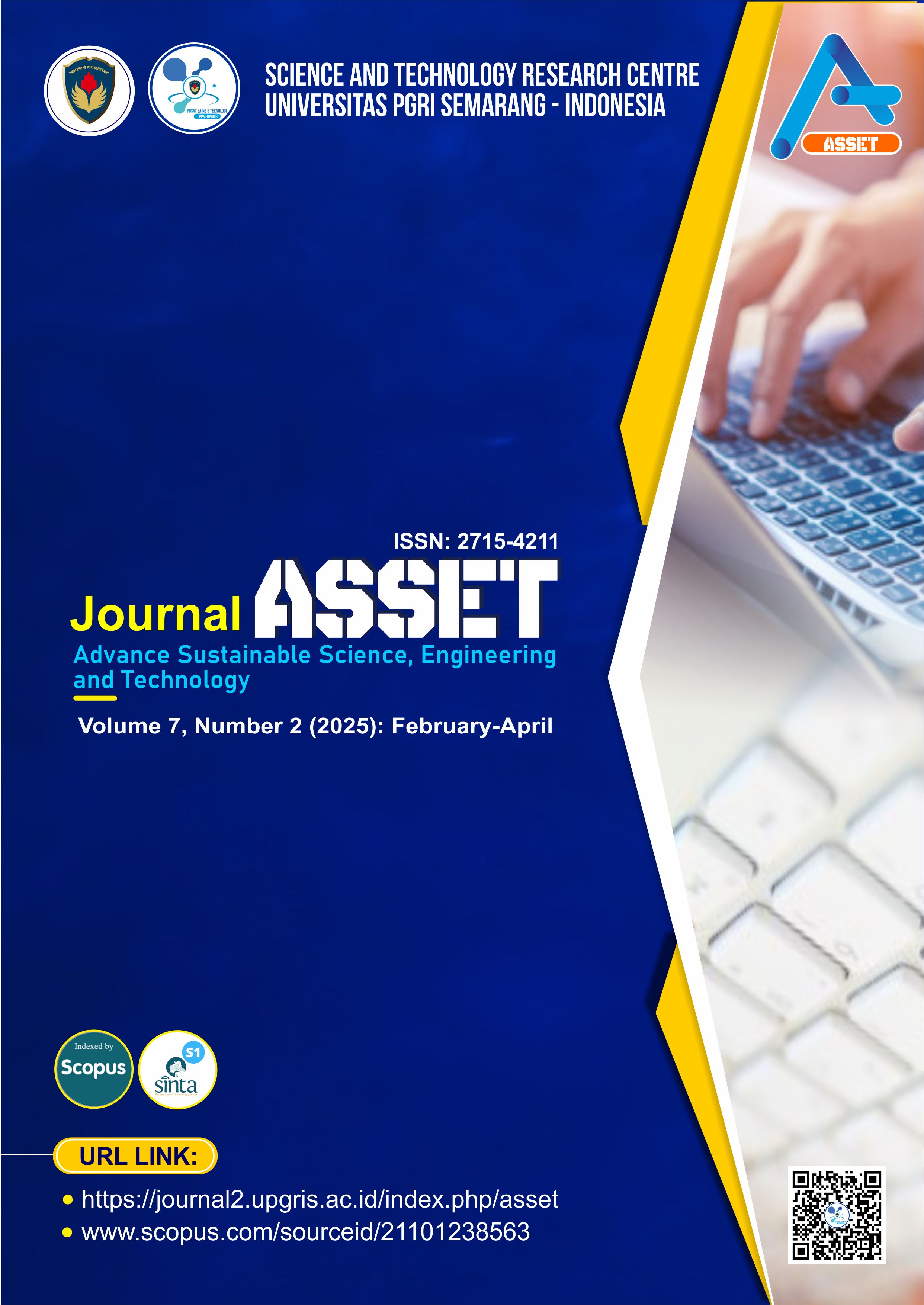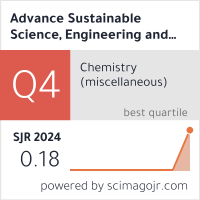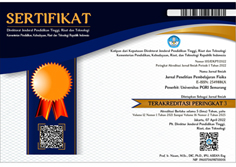Election Officers' Health and Safety: An Occupational Risk Analysis
DOI:
https://doi.org/10.26877/dxrp0s27Keywords:
Occupational Health, Fatigue, Risk Management, Elections, Blood Pressure, WorkloadAbstract
General elections are vital to democracy in Indonesia, yet the occupational health and safety (K3) of Voting Organizer Group (KPPS or election officers) officers is often overlooked. This study evaluates the impact of workload on the physiological health of election officers during the 2024 General Election using an ergonomics-based approach. Data were collected from seven KPPS members at TPS 07 Cerme Kidul, Gresik, East Java, measuring blood pressure and oxygen saturation before and after election day. The Wilcoxon Signed Rank Test revealed significant increases in blood pressure (p = 0.046) and decreases in oxygen saturation (p = 0.047) post-election. Key risk factors identified include long working hours, insufficient rest, and static positions. The study recommends interventions such as work shift rotations, extended rest periods, enhanced health screenings, and ergonomic improvements at polling stations. These measures aim to improve the health and safety of election officers, contributing to safer and more sustainable elections.
References
[1] R. Alra, Upaya KPU Kota Batu dalam Meningkatkan Partisipasi Pemilih Pemula Pada Pemilu 2024 (Analisis Yuridis Empiris PKPU No. 9 Tahun 2022), vol. 2024, no. 9. 2024.
[2] P. Mirna, R. Rita, and P. S. Irma, ‘Partisipasi Pemilih dalam Pemilihan Umum Tahun 2024 di Kabupaten Bogor’, Karimah Tauhid, vol. 3, no. 8, pp. 9443–9454, 2024, [Online]. Available: https://ojs.unida.ac.id/karimahtauhid/article/view/14816/5719.
[3] K. Syakirun Ni’am, ‘Ratusan Petugas Pemilu Wafat, Komnas HAM: Kerja Sehari Semalam Itu Tidak Layak’, KOMPAS.com, 2024. https://nasional.kompas.com/read/2024/03/28/06124631/ratusan-petugas-pemilu-wafat-komnas-ham-kerja-sehari-semalam-itu-tidak-layak. .
[4] T. D. Pramono, A. M. Sayuti, M. R. Gaffar, and R. A. Puspitaningrum, ‘Penilaian Risiko Ergonomi Pada Lingkungan Kerja Perkantoran Menggunakan Metode Rapid Office Strain Assessment ( ROSA )’, J. Pendidik. Adm. Perkantoran Vol. 10, Nomor 3, 2022 Penilai., vol. 10, no. 3, pp. 246–255, 2022, [Online]. Available: https://journal.unesa.ac.id/index.php/jpap/article/view/19286/8881.
[5] F. Kostelka, ‘Understanding Voter Fatigue: Election Frequency & Electoral Abstention Approval’, Br. J. Polit. Sci., Feb. 2025.
[6] M. T. Yulianto and Y. D. Nurcahyanie, ‘Tibuana Journal of applied Industrial Engineering-University of PGRI AdiBuana e- ISSN 2622-2035 Applied OHS With Empirical Ergonomics and Hazard Methods to Minimize Fatigue at KPPS Cerme Gresik Tibuana Journal of applied Industrial Engineering-University’, Tibuana J. Appl. Ind. Eng. PGRI AdiBuana, vol. 07, no. 1, pp. 77–81, 2024, doi: https://doi.org/10.36456/tibuana.7.01.8607.77-81.
[7] A. Muliawati, ‘183 Petugas Pilkada 2024 Meninggal Dunia’, detik news, 2024. https://news.detik.com/berita/d-7761249/183-petugas-pilkada-2024-meninggal-dunia (accessed Mar. 25, 2024).
[8] K. Panahi, S. Robertson, Y. Acar, A. G. Bardas, T. Kohno, and L. Simko, ‘“But they have overlooked a few things in Afghanistan”: an analysis of the integration of biometric voter verification in the 2019 Afghan presidential elections’, 2024.
[9] A. H. Hidayat, ‘Mewujudkan Tps Pemilu Yang Nyaman Dalam Upaya Meminimalisir Kelelahan Petugas Kpps : Kajian Ergonomi’, J. Inov. Tek. Ind., vol. 1, no. 1, p. 49, 2022, doi: 10.26753/jitin.v1i1.798.
[10] P. Sariguna, J. Kennedy, R. Lumbantoruan, N. J. Batubara, M. Natalia, and M. Rifai, ‘Diskusi Mengenai Manajemen Sumber Daya Manusia terhadap Petugas Badan Ad Hoc pada Pemilu 2024’, IKRAITH-ABDIMAS, vol. 9, no. 2, pp. 131–139, 2024, doi: https://doi.org/10.37817/ikra-ithabdimas.v9i2.
[11] A. Benjamin O, Fundamental Principles of Occupational Health and Safety, 2nd ed. Geneva: Inernational Labour Office, 2008.
[12] B. Fernández-Muñiz, J. M. Montes-Peón, and C. J. Vázquez-Ordás, ‘Occupational risk management under the OHSAS 18001 standard: analysis of perceptions and attitudes of certified firms’, J. Clean. Prod., vol. 24, pp. 36–47, 2012, doi: https://doi.org/10.1016/j.jclepro.2011.11.008.
[13] T. Aven, ‘Risk assessment and risk management: Review of recent advances on their foundation’, Eur. J. Oper. Res., vol. 253, no. 1, pp. 1–13, 2016, doi: https://doi.org/10.1016/j.ejor.2015.12.023.
[14] R. Koirala and A. Nepal, ‘Literature Review on Ergonomics, Ergonomics Practices, and Employee Performance’, Quest J. Manag. Soc. Sci., vol. 4, pp. 273–288, Dec. 2022, doi: 10.3126/qjmss.v4i2.50322.
[15] L. Liao, K. Liao, N. Wei, Y. Ye, L. Li, and Z. Wu, ‘A holistic evaluation of ergonomics application in health, safety, and environment management research for construction workers’, Saf. Sci., vol. 165, p. 106198, 2023, doi: https://doi.org/10.1016/j.ssci.2023.106198.
[16] S.-J. Kwon, S.-W. Choi, and E.-B. Lee, ‘Hazard Identification and Risk Assessment During Simultaneous Operations in Industrial Plant Maintenance Based on Job Safety Analysis’, Sustainability, vol. 16, no. 21. 2024, doi: 10.3390/su16219277.
[17] W. C. Yew, M. K. Sia, and O. Q. Janet, ‘Safety Risks Analysis: Moderating Effect of Risk Level on Mitigation Measures Using PLS-SEM Technique’, Sustainability, vol. 15, no. 2. 2023, doi: 10.3390/su15021090.
[18] Y. Galuh Larasati, H. Fernando, H. Jubba, I. Abdullah, M. R. Darus, and S. Iribaram, ‘Past preferences informing future leaders for Indonesian 2024 general elections’, Cogent Soc. Sci., vol. 9, no. 1, pp. 1–14, 2023, doi: 10.1080/23311886.2023.2229110.
[19] S. R. Ananda, H. G. D. H. Wibowo, and I. Surya, ‘The Urgency of Implementing a Blockchain-Based E-Voting System in Organizing General Elections in Indonesia’, Res. Rev. Int. J. Multidiscip., vol. 9, no. 4, pp. 147–155, 2024, doi: 10.31305/rrijm.2024.v09.n04.018.
[20] KPU, ‘Keputusan Komisi Pemilihan Umum’. p. 329, 2024, [Online]. Available: https://jdih.kpu.go.id/data/data_kepkpu/2024kpt066.pdf.
[21] V. A. Fajar, K. Soeryodarundio, and M. Rifai, ‘Occupational Health & Safety Risk Analysis with HIRADC Method in Building Construction Project X’, Sustain. Civ. Build. Manag. Eng., vol. 1, no. 4, p. 9, 2024, doi: 10.47134/scbmej.v1i4.3121.











